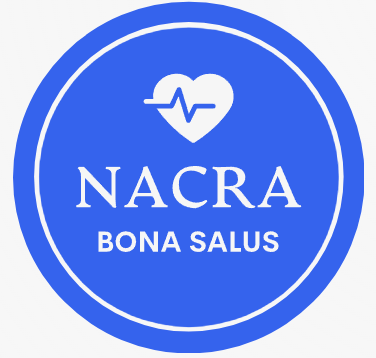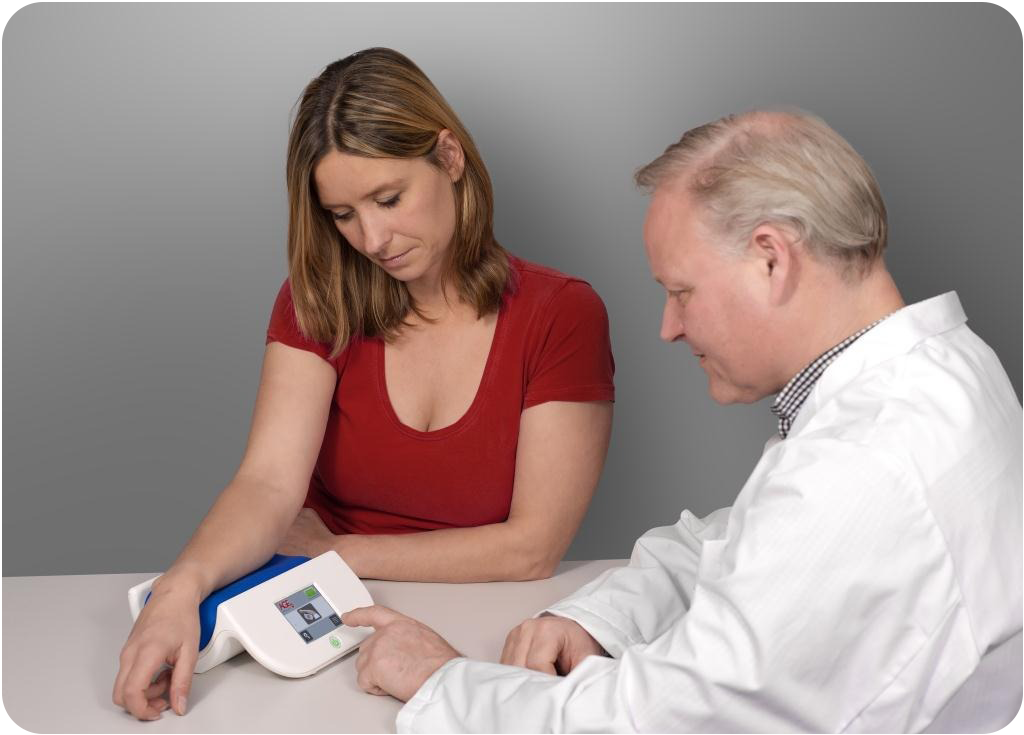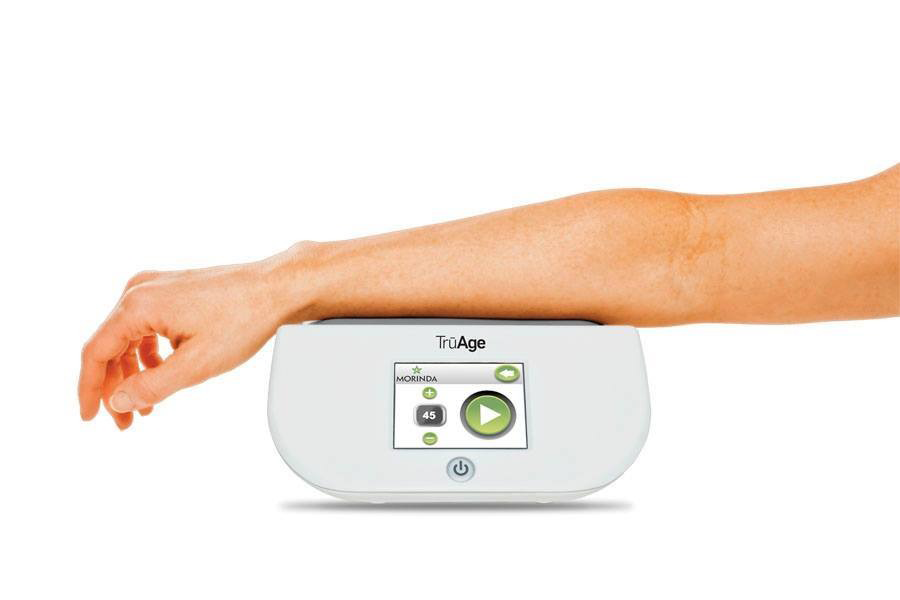
North American Clinical Research Associates
|
|
|
What's Your True Age?
"Many diseases stay hidden inside the body until it's too late."
Dear Friends and Neighbors, As many of you know, I worked professionally for over 25 years in the field of health and fitness. Now that I'm getting older—as many of you are—I'm on a mission to alert everyone about a health risk that causes serious disease as we age. This risk relates to illnesses such as type-2 diabetes, cardiovascular disease, some cancers, and even Alzheimer's disease. Poisonous Glycotoxins: This threat comes from compounds called Advanced Glycation End Products (AGEs), also known as glycotoxins. If you Google "advanced glycation end products," you'll find lots of medical studies about this growing concern. I've also created this webpage to provide you with insights and help. Hidden Decay Inside You: In a nutshell, AGEs are corrosive oxidant compounds that form in your body when sugar reacts with proteins and fats. They build up in the body over the years. The level of AGEs in the body is an indicator of your general health, as well as a predictor of risk for future chronic illness. Even though you feel fine today, you may have elevated AGEs. This is not a good thing.
Too Old, Too Fast: Besides being a precursor to disease, AGEs also speed up the aging process. When you check your level of AGEs, you get to see your true biological age. This is very different from your birth age. Your biological age indicates how rapidly your body is physically deteriorating (cellular senescence). For instance, your body could actually be 78 years old, while your birth certificate says you're only 62. If your body is older than your birth age, you should be concerned. Heads Up: The reason I'm sharing this with you— Measuring Your AGEs: Normally, detecting AGE levels is an expensive, complicated process. It involves taking a tissue sample ("punch biopsy") that is sent to a specialty laboratory for analysis. This is expensive, takes time, and is quite invasive. What's more, most medical laboratries in the US are not equipped to perform AGE diagnostic testing.
Technology to the Rescue: However, thanks to new advances made by Diagnoptics Technologies in Europe, you can now painlessly detect AGE levels in a matter of seconds. This is done using a non-invasive, skin autofluorescence scan on your forearm. It's an amazing process. In fact, when I learned of this breakthrough, I was so impressed that I purchased and imported a mobile AGE scanning unit, even though it was quite expensive. Discover Your True Age: This medical device not only instantly provides your biological age (your actual physical age), but also gives a risk analysis of the hidden factors that are silently damaging your health. This includes risks for diseases such as type 2 diabetes, cardiovascular disease, Ahzheimer's disease, and cancer. Knowing this information in advance can give you a huge advantage for countering these risks before it's too late. Yes, forewarned is forearmed. As a certified technician, I have used my AGE scanning device to help hundreds of people assess their true biological age, overall health, and AGE risk factors. Even though I'm now retired, I still have this device in my possession (I own it). It is one of only a handful of such medical devices in the US. As authorized by the FDA under a special IUO classification, I can use this equipment for investigational purposes, and provide test results to certain people I know personally.
A Personal Service For Friends and Neighbors— Yes, I Make House Calls: Subject to my schedule, I can bring my AGE scanning device to your home or office. I'll conduct a painless, non-invasive diagnostic analysis for you at no cost (of course, tips are always welcome). Since I'm retired and own the equipment, I can perform this procedure as a service, and it costs me only a fraction of the normal cost to get an AGE laboratory test. Please see Question #7 below for details about this complimentary service available exclusively for people I know personally. Health Is Wealth: Thank you for letting me share this important information with you. I urge you to give this some serious consideration. As we get older, it's so vital to be wise and do all we can to take care of ourselves. Considering the many threats we face today, ancient Virgil may have said it best: "The greatest wealth is health." I look forward to hearing from you very soon. Kind regards, Dru White
Your Health: 7 VITAL QUESTIONS ▼ Click Below to Open ▼
AGEs, or Advanced Glycation End Products, can actually be deadly due to their various negative effects on the body. Here are some reasons why AGEs can be highly problematic: • Tissue and Organ Damage: AGEs accumulate in various tissues and organs, including the kidneys, eyes, blood vessels, and nerves. This accumulation contributes to damage and dysfunction in these areas, potentially leading to conditions like kidney disease, diabetic retinopathy, atherosclerosis, and neuropathy. • Inflammation: AGEs trigger an inflammatory response in the body, leading to chronic inflammation. Chronic inflammation is associated with a wide range of health problems, including cardiovascular disease, arthritis, and cancer (especially breast, prostate, pancreatic, and colorectal). • Oxidative Stress: AGEs promote oxidative stress, a condition where there is an imbalance between the production of harmful free radicals and the body's ability to counteract them with antioxidants. This oxidative stress damages cells and DNA and is linked to aging and various diseases. • Diabetes Complications: AGEs play a role in the complications of diabetes. They contribute to insulin resistance, impaired glucose metabolism, and the development of diabetic complications, such as diabetic neuropathy and nephropathy. • Skin Aging: AGEs are associated with skin aging and the formation of wrinkles and brown blotches. They negatively affect the elasticity and appearance of the skin. • Alzheimer's Disease: There is emerging research indicating that AGEs play a role in the development of neurodegenerative diseases like Alzheimer's disease. The exact mechanisms are still being investigated. For more information about the chronic disease risks posed by high levels of AGEs, see National Institutes of Health, National Library of Medicine, "Advanced Glycation End Products and Risks for Chronic Diseases: Intervening Through Lifestyle Modification," https://www.ncbi.nlm.nih.gov/pmc/articles/PMC6600625/.
Advanced Glycation End Products (AGEs) are compounds that form in the body through a complex chemical process known as glycation. AGEs can also come from external sources, primarily through the diet. Here are the main sources of AGEs: • Endogenous Formation: AGEs are naturally formed within the body as a result of the chemical reaction between sugars (glucose or fructose) and proteins or fats. This process occurs during normal metabolism. The accumulation of AGEs increases with age, and it can be exacerbated in conditions like diabetes. • Dietary Sources: Consuming food that is cooked at high temperatures, particularly through dry heat methods like frying, grilling, roasting, and baking, can introduce exogenous (external) AGEs into the body. Meats, particularly red meats, and processed foods are known to be rich sources of dietary AGEs. The browning and crisping of food during cooking is often a sign of AGE formation. • Processed and Packaged Foods: Many processed and packaged foods contain pre-formed AGEs as additives, which can contribute to dietary AGE intake. Processed and ultra-processed foods often have higher AGE content due to the industrial cooking methods used in their production. • Alcoholic Beverages: Some alcoholic beverages, particularly beer, can contain significant levels of AGEs. • Cigarette Smoke: Smoking is a source of exogenous AGEs as it introduces them directly into the body. Smoking is associated with various health issues, and AGEs are definitely a contributing factor. • Exposure to Air Pollution: Air pollution has been linked to the formation and accumulation of AGEs in the body, potentially due to the oxidative stress and inflammation induced by air pollutants. • Medications and Medical Procedures: Certain medications and medical procedures can contribute to AGE formation in the body. For example, individuals receiving hemodialysis may be exposed to AGEs through the dialysis process. For more information about AGEs in food, see National Institutes of Health, National Library of Medicine, "Advanced Glycation End Products in Foods and a Practical Guide to Their Reduction ini the Diet," https://www.ncbi.nlm.nih.gov/pmc/articles/PMC3704564/; see also, "Formation of advanced glycation endproducts in food during cooking pcocess and underlying mechnaisms: a comprehensive review of experimental studies," https://pubmed.ncbi.nlm.nih.gov/31699165/.
Advanced Glycation End Products (AGEs) can be detected and measured through various methods. These methods can be used to assess AGE levels in biological tissues, blood, and body fluids. • TrûAGE Skin Autofluorescence: This non-invasive scanning method involves the use of a specialized device to measure the autofluorescence of AGEs in the skin. AGEs emit fluorescence when exposed to specific wavelengths of light, and the level of autofluorescence can be used to determine the AGE accumulation in the skin, which typically correlates with AGEs in other tissues. • Tissue Biopsy: AGE levels can be assessed in specific tissues through biopsy samples. This is an invasive method and is typically reserved for research purposes or when a specific organ's AGE content needs to be studied. • Blood Tests: Blood tests can measure specific markers associated with AGEs, such as carboxymethyl-lysine (CML) and pentosidine. These markers can be quantified using enzyme-linked immunosorbent assays (ELISA) or other immunoassay techniques. Because the content of blood as a fluid varies based on certain factors (such as daily diet and activity), blood tests are not as consistent and accurate as some other tests that rely on tissue analysis. • Urine and Saliva Tests: Some AGEs can be detected in urine and saliva samples. These tests may not provide information that's as comprehensive as blood tests but can still offer insights into AGE levels in the body. Also, as with blood tests, compounds in urine and saliva can vary widely depending no the timing and circumstances of the test. • Imaging Techniques: In some research settings, imaging techniques such as positron emission tomography (PET) or magnetic resonance imaging (MRI) have been used to visualize AGE deposition in tissues. These techniques are not typically used for routine assessment because they rely heavily on visual interpretation. • Measurement of Skin Biomechanical Properties: Changes in skin biomechanical properties, such as skin stiffness, can be associated with the accumulation of AGEs. Specialized devices can be used to measure these properties; however, this technique does not provide quantitative data with regard to AGE concentrations. It's important to note that the availability of these methods and their use in practice may vary. TrûAGE skin autofluorescence scanning is the most convenient and non-invasive way to determine AGE levels. It is used in many settings to assess AGE-related risks and potential precursors for a number of serious health conditions. For more information about the use and effectiveness of TrûAGE skin autofluorescence scanning, see National Institutes of Health, National Library of Medicine, "Skin Autofluorescence — A Non-invasive Measurement for Assessing Cardiovascular Risk and risk of Diabetes," https://pubmed.ncbi.nlm.nih.gov/29872473/.
AGEs (Advanced Glycation End Products) can serve as a biomarker for a person's biological age because their accumulation is associated with the aging process and age-related diseases. Listed below are some factors that can be used in determining a person's biological age. Also, TrûAGE skin autofluorescence scanning is a non-invasive method used to estimate the accumulation of AGEs in the skin. This measurement can provide an indirect assessment of the level of AGEs in the body, as skin autofluorescence tends to increase with age. • Accumulation Over Time: AGEs naturally accumulate in the body over the course of a person's lifetime. This accumulation is driven by the ongoing process of glycation, where sugars react with proteins and lipids in a non-enzymatic manner. As people age, more AGEs tend to build up in various tissues. • Tissue Damage and Dysfunction: AGE accumulation can lead to damage and dysfunction in various tissues and organs, contributing to age-related diseases and conditions. For example, AGEs can affect the elasticity of blood vessels, contributing to atherosclerosis (hardening of the arteries), a common age-related condition. They can also impact the function of the kidneys, eyes, and nerves, which are often affected by aging. • Association with Age-Related Diseases: AGEs have been linked to several age-related diseases, including diabetes, cardiovascular disease, Alzheimer's disease, and others. The higher the AGE levels in the body, the greater the risk of developing or exacerbating these conditions. • Skin Aging: AGEs are associated with the aging of the skin. The accumulation of AGEs in the skin can lead to the formation of wrinkles, loss of elasticity, age spots, and a general appearance of aging. • Implication for Longevity: Higher levels of AGEs have been associated with reduced lifespan in some studies, indicating that AGEs may play a role in the aging process and overall longevity. It's important to note that AGEs may not necessarily be the sole determinant for providing a person's biological age. AGEs are rather one piece of the puzzle in understanding the aging process and its implications for health. They are one of several factors that contribute to the complex process of aging. Genetics, lifestyle factors (such as diet, exercise, and smoking), and environmental influences also play crucial roles in determining a person's biological age. For more information about the use and effectiveness of TrûAGE skin autofluorescence scanning, see National Institutes of Health, National Library of Medicine, "Skin Autofluorescence — A Non-invasive Measurement for Assessing Cardiovascular Risk and risk of Diabetes," https://pubmed.ncbi.nlm.nih.gov/29872473/.
Congratulations on choosing to have a non-invasive TrûAGE scan for the purpose of assessing the presence of Advanced Glycation End Products (AGEs) in your body. As you know, elevated levels of AGEs correlate medically to many age-related health conditions, including cardiovascular disease, type-2 diabetes, some types of cancer, and dementia. You are wise to investigate these vital health considerations at this time. GUIDELINES FOR RECEIVING YOUR AGE SCAN • Quick and Painless Procedure: The scanning process is completely non-invasive and takes only a few seconds to complete. You simply rest your forearm on the device and relax. A certified technician will assist you every step of the way. It’s easy, quick, and painless. • Choice of Clothing: For your scanning procedure, wear clothing that permits easy access to the skin on your forearms between your elbows and wrists. Short or loose sleeves usually work well. • No Skin Products: Make sure your forearms are clean, dry, and residue free. Do NOT use any lotions, creams, oils, or any other products on your forearms the day of the procedure. • Skin Conditions: Before the procedure begins, be sure to tell your technician if you have any scars, birthmarks, tattoos, scabs, or other unique skin conditions on the underside of your forearms. Any abberations could affect your scan results. • Skin Pigmentation: Please be aware that skin pigmentation can affect the accuracy of scan results. This is due to the technical conditions of skin autofluorescence. If you have a very dark skin tone, you may not be an ideal candidate for the procedure. • Eat As Normal: You don't need to fast or modify your normal eating, sleeping, or fitness habits for this procedure. Your scan results will not be affected by these factors. • Scanning At Your Location: If the procedure will take place at your home or office, plan to use the corner area of a standard table as a work area. Include two adjacent chairs, one for you and one for the technician. A power outlet is not needed for the mobile scanning device. • Your Final Report: The technician will calculate your scan results within minutes after completing your procedure. They will give you a private written report for your records. • Prepare Emotionally: If your scan results are not as favorable as you had hoped, stay calm and positive. In particular, be accepting of the results as you focus on steps you can take to make improvements. Rest assured, you are doing the right thing. You are wise to educate yourself and take specific actions to become healthier. • Set Goals: Take the initiative and be assertive in lowering and maintaining healthy A.G.E. levels. There are many resources available today to help you. There’s a lot you can do! • Regular Monitoring: Consider scheduling regular AGE scans, once every two or three months, to monitor your progress and to help you stay on track to enjoy a long, happy life. If you have questions or need to reschedule your appointment, please contact the Scheduling Coorindator who helped you arrange this important screening procedure.
Advanced Glycation End Products (AGEs) are harmful compounds that form when sugars react with proteins and lipids in the body. Reducing your intake of AGEs and promoting their elimination from your body can help lower their levels. In order of importance, here are five effective things you can do to lower your AGEs and reduce the damage they cause. • Limit Sugar and Refined Carbohydrates: High blood sugar levels contribute to the formation of AGEs. Reducing your intake of sugar and refined carbohydrates can help lower blood sugar levels and reduce AGE formation. • Regular Exercise: Physical activity can improve insulin sensitivity and help regulate blood sugar levels, which can, in turn, reduce the formation of AGEs. Among other forms of activity, your routine should include cardiovascular exercise consisting of an elevated heart rate for at least 20 sustained minutes, three or more days per week. If you haven’t been exercising regularly, always consult your doctor before beginning a new exercise program. • Dietary Modifications: Reduce your consumption of processed and pre-packaged foods, as they tend to be high in AGEs. Instead, opt for fresh, whole foods. Also, choose lower-heat, liquid-based cooking methods that generate fewer AGEs, such as steaming, boiling, poaching, and stewing. This is much better than high, dry heat such as frying, grilling, or broiling. • Increase Antioxidant-Rich Foods: Antioxidants can help counteract the effects of AGEs. Include plenty of fruits and vegetables in your diet, as they are rich in antioxidants. Berries, leafy greens, and colorful vegetables are particularly good choices. • Dietary Supplements: Certain supplements, such Tahitian Noni™ juice (Morinda citrifolia), can help reduce AGEs. This all-natural product is rich in iridoids and antioxidants, and has been shown in research studies to help lower AGEs in prediabetic subjects. See National Institutes of Health, National Library of Medicine, https://www.ncbi.nlm.nih.gov/pmc/articles/PMC6106972/
In addition to these lifestyle changes, it's essential to stay hydrated and maintain a balanced, healthy diet. Reducing inflammation in the body and promoting overall health can also assist in lowering AGE levels. Consult with a healthcare provider who is knowledgable about AGEs to create a personalized plan to address your specific needs and health goals.
An AGE test at a medical laboratory can cost as much as $4,500 per individual. Yes, I know. Wow. The good news: Because I use my own equipment and don't have office overhead, my actual cost to perform scanning procedures is much less. If I were still working, my normal rate would be $480 for a scan. But that is for the general public, not for you. No Cost for Friends and Neighbors • As a personal favor to people I know, I'm willing to write off my cost for performing scans. Some of these costs include the scanning device itself, medical supplies, report forms, gas for my car, etc. Of course, if you want to help me out, tips are always welcome; however, this is entirely at your discretion. In short, I can perform a certified AGE scan for you at no cost. • Organize a Small Group: If you are able to organize a small group (4 people or more) who can be scanned at the same time, this will help me save on travel costs and economize my time. Simply invite friends and family to be scanned with you during the same session, at the same location. Important Note: If you wish to give me an optional gratuity (cash tip) to show your appreciation for this vital service, please plan to do so using cash only—as I'm not able to accept other forms of payment or issue receipts under this special arrangement. Also, please note that this offer is subject to change, limitations, or cancellation without notice, and I reserve the right to refuse this service to anyone at any time for any reason. To Schedule a Session You can contact me directly to reserve a date for a scanning session. If possible, sessions need to be scheduled a few days in advance and should take place within a convenient driving distance from my home in Salt Lake City. Thank you.

Talk With Your Friends Now Throw an AGE Scan Party: Help me spread the word about the serious health threat posed by AGEs. Invite people you know to join you to get a no-cost AGE scan. When it comes to helping others, there are no strangers. Your friends are my friends—I just haven't met some of them yet. I look forward to joining you soon for a complimentary scanning session at your home, office, or other convenient location.
©2023-24 NACRA LLC, Salt Lake City, Utah. All rights reserved. |













